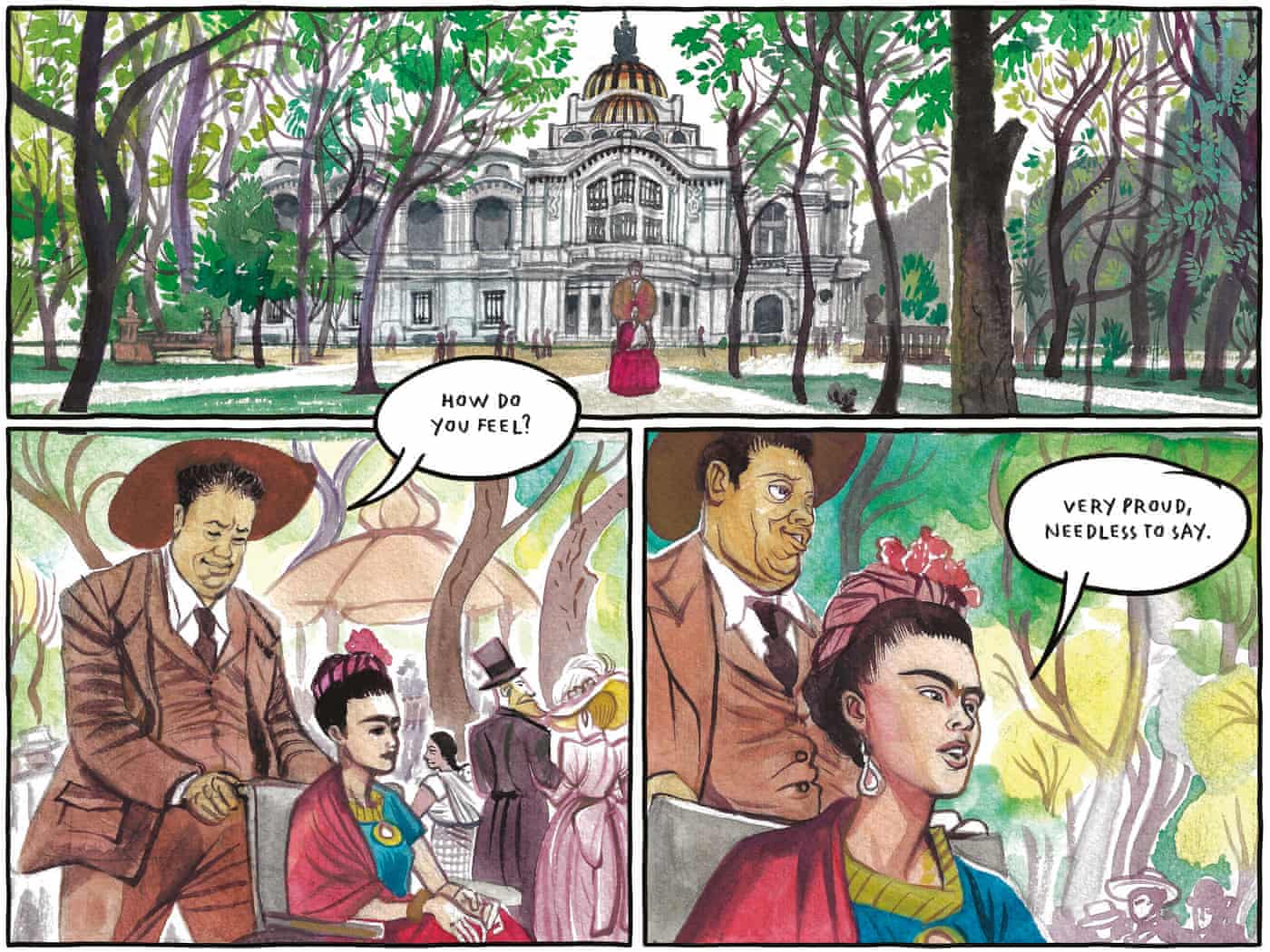Diego Rivera by Francisco de la Mora and José Luis Pescador review – rumbustious hymn to a radical artist
In this frenetic, rumbustious new graphic biography of Diego Rivera by Francisco de la Mora and José Luis Pescador, the Mexican artist’s third wife (and fourth: they married twice) appears only fleetingly. We don’t find out where or how they met; the powerful connection between them, never fully explained, must simply be taken for granted by the reader. But perhaps the authors feel that Frida Kahlo has had a bit too much attention just lately: who could forget the snaking queues at the V&A’s show of her work in 2018? In their book, then, it’s Rivera who is centre stage. Like a raging bull, rushing into the ring for a fight, he dominates every page, all bristling melodrama and animal energy.
“There have been two great accidents in my life,” Kahlo said. “Diego was by far the worst.” There is surely hyperbole in this statement, however unhappy Rivera made her at times (both of them were repeatedly unfaithful). But you grasp her meaning: the sense of collision that accompanied her husband wherever he went. Though his talent was prodigious – he went to art school at 11 – it often struggled to find its place in a life that was by any standards overpopulated with incident. Born in 1886, Rivera was the son of a journalist who was involved in revolutionary politics, instincts he would famously go on to share. Travelling in Europe, he met Lenin in Paris and Stalin in Moscow; later, he offered refuge to Trotsky during his Mexican exile. But revolutionaries come in many guises. If he talked the talk – even after fame arrived, he remained proudly un-clubbable – he was also easily distracted, usually (though not exclusively) by women.

A page from Diego Rivera. Illustration: José Luis Pescador
De la Mora and Pescador pick and choose when it comes to the biographical details. They make little, for instance, of Rivera’s Jewishness on his mother’s side – her family was supposed to have converso history (ancestors who were forced to convert to Catholicism) – something that he felt informed both his art and his politics. But they’re predictably enthralled – and who can blame them? – by his years in Paris, where he knew Braque, Picasso and Modigliani and embraced cubism (a passion that did not last). There is, perhaps, a bit too much wild sex in their book – bed springs are always groaning; women are ecstatic at his merest touch – but they make the most both of his return to Mexico and, later, the time he spent in the US, where he accepted commissions from such giants of capitalism as John D Rockefeller.
Pescador, who illustrates, has a feeling for the epic scene; he knows just how to do it, stepping back from the frame, opening things out. Depicting the artist at work at his mural The History of Mexico in the stairwell of the National Palace in Mexico City – Rivera’s Sistine Chapel, it took six years to complete – he uses fold-out pages, the better to give us a 360-degree fix on the spectacle and the result is quite wonderful, a moment of quiet in a narrative that is at times very noisy. Rivera and Kahlo, now in a wheelchair, are tiny on a landing. Like two small children, their chins are raised, they eyes look ever upwards. Here is his vision, vast and teeming and fervent, and it seems that even they must struggle to take it all in.
Diego Rivera by Francisco de la Mora and José Luis Pescador is published by SelfMadeHero (£16.99). To support the Guardian and Observer order your copy at guardianbookshop.com. Delivery charges may apply



No comments:
Post a Comment